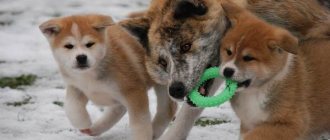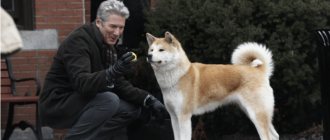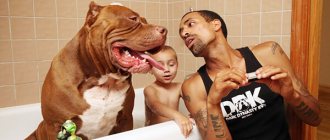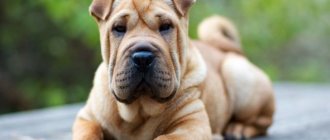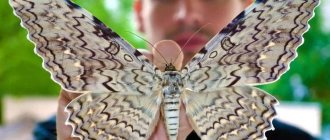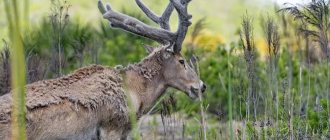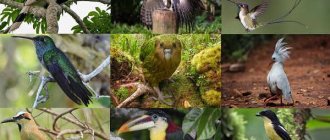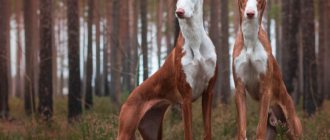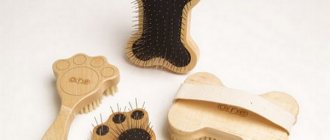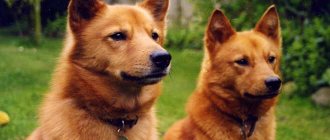Hachiko is an Akita Inu dog known to almost everyone in Japan. Her story is the most popular of all true dog stories, and has been passed down from generation to generation, as well as appearing in books, films and television dramas. Not only does it demonstrate the deep bond that can form between a human and a dog, but it also shows the essence of the Japanese dog's temperament and unwavering loyalty to its owner. Hachiko continues to touch people's hearts even today.
The events began around the early 1920s, when a certain Hidesaburo Ueno, a professor at the Imperial University (now the University of Tokyo), became the owner of an Akita Inu puppy, which he named Hachiko. The puppy grew up to be a beautiful dog, 64 cm tall and weighing 41 kg, with a sickle-shaped tail and thin light yellow hair.
Hachiko really enjoyed spending time with Ueno. When the professor went to the Shibuya train station, usually around nine o'clock in the morning, Hachiko always went with him. Then the dog returned home and at about six o’clock in the evening went to the station again to meet his owner. The sight of the two leaving for the station in the morning and returning home at night left a deep impression on many people.
However, Hachiko's happy life as Professor Ueno's pet was interrupted by a very sad event, just a year and four months later. On May 21, 1925, Professor Ueno died at work from a sudden intracerebral hemorrhage. The story goes that the night after this, Hachiko, who was in the garden, broke through the glass doors into the house and made his way into the living room where the body of the deceased was located, and spent the night lying next to the owner, refusing to budge.
After this the really sad part of the story begins. When the owner died, the dog Hachiko was sent to live with Professor Ueno's relatives in eastern Tokyo. But he ran away many times, returning to the house in Shibuya, and even after a year he still had not found his new home. The dog was adopted by Professor Ueno's former gardener, who had known him since he was a puppy. But Hachiko still ran away from this house many times. Realizing that the previous owner no longer lived in the old house in Shibuya, Hachiko walked to Shibuya Station every day and waited for the professor to return home. Every day he looked for Ueno's figure among the returning passengers, and only left when he needed to eat. He did this day after day, year after year.
Shibuya Station
Soon, people began to notice Hachiko's daily appearance at Shibuya Station. Although this dog was made famous by an article by Hirokichi Saito, published in September 1932 in the national Japanese newspaper Asahi Shimbun. The author had been interested in Hachiko for some time and sent photographs and details about him to a magazine that specialized in Japanese dogs. Hachiko's photograph also appeared in dog encyclopedias abroad. Thanks to the spread of information, almost everyone in Japan learned about Hachiko and he became a celebrity. He was invited several times to Nippo shows, and his image was used to make figurines and pictures.
On April 21, 1934, a bronze statue of Hachiko by sculptor Tern Ando was installed in front of the ticket gate of Shibuya Station. The opening ceremony was a grand event, attended by Professor Ueno's grandson and crowds of people. Unfortunately, this first statue was melted down to make weapons during World War II in 1944. However, in 1948, a replica of the monument was made by Takeshi Ando. This monument can still be found today at Shibuya Station. Hachiko's unexpected fame did not change his life at all; it continued just as sadly as before. Every day he went to the station and waited for Professor Ueno to return.
Photo of Hachiko a year before her death
In 1929, Hachiko suffered from scabies, which nearly killed him. Being on the streets for so many years had left him thin and he was constantly fighting with other dogs. One of his ears no longer stood straight up, and he seemed completely miserable, not like the proud, strong animal he had once been. He could be mistaken for a simple, old mongrel.
Posthumous photo of Hachiko, March 8, 1935
As Hachiko grew old, he became very weak and suffered from heartworms. Finally, on March 8, 1935, at the age of eleven, he took to the streets of Shibuya for the last time. The total period of time that the dog waited for his owner was nine years and ten months. Hachiko's death was reported in major Japanese newspapers, and many people were heartbroken by the sad news. His bones were buried next to Professor Ueno. He was finally reunited with the person he had been waiting for so long.
Monument to Hachiko and Professor Ueno
The story of Hachiko is etched in the hearts of the Japanese, and it is certainly the most touching story about the strong bond between a dog and his owner, as well as the boundless loyalty that an Akita Inu is capable of.
Application
Like the West Siberian and Karelian-Finnish Laika , the Akita Inu is a wonderful companion for humans, one of the best in the whole world.
This dog is well suited for living in a large family and as a companion for lonely people.
In the first case, she will have fun and communicate with all family members, but at the same time remain calm, in the second, she will become an excellent friend and companion.
Akita Inu, thanks to its excellent swimming ability, can become an excellent water rescuer.
These dogs perform well in a home with children.
They easily take responsibility for the behavior of children and monitor it well, making sure that the child does not do anything bad or get into trouble.
At the same time, Akita Inu is easily given into children's hands, without objecting to constant games. A wonderful nanny and friend for the baby.
Every day, like clockwork
From the day they met, man and dog became inseparable. The professor adored his dog, but not as much as the dog adored him. Hachiko was always nearby, except for the time that Hidesaburo Ueno spent at work.
The true story of the faithful dog Hachiko says that the dog followed his owner to Shibuya Station, accompanying him to the city for work. After that, he went home, but at exactly three o’clock in the afternoon he again stood at the station, waiting for his man. This went on day after day.
How to choose a puppy
First of all, you need to remember that a black mask, familiar to the related breed of American Akita, is categorically unacceptable for the Akita Inu, just like a hanging tail.
You should not choose a dog from a litter that is too large, nor should you give preference to the largest and most well-fed puppy in the entire litter.
The ideal choice would be a playful and active puppy from a small litter where all the babies are approximately the same size.
Akita Inu puppies are restless, they are playful and playful, friendly and open to new acquaintances.
Healthy Akita Inu puppies are moderately well-fed, are not at all afraid of loud and unexpected sounds and do not show aggression at all - only lively curiosity.
In addition, puppies of this breed have an amazing temperament; only with age do they become reasonable and calm.
Monument in honor of the legend
The first monument to a dog named Hachiko was erected during his lifetime, almost a year before his death - on April 21, the hero himself was present at the opening of the monument.
The Second World War forced the authorities to remove the monument and melt it down for the needs of the Japanese army. But they didn’t forget about the dog and returned a copy of the monument to its original place in 1947.
The second monument is less known; it was erected in the city of Odate on the station square. Unfortunately, the Second World War took him too for the needs of the army. But again, the copy was installed in 1987.
Today, the monument to the dog Hachiko is not only memories of the dog, but also a tribute to the devotion and loyalty of the Akita Inu breed. Surely it is impossible to find more popular places for appointments than the square where there is a monument to the legendary faithful dog Hachiko, whose real story amazed the whole world with its drama!
The remains are in the museum
The people of Japan were not ready to say goodbye to Hachiko forever, because such a dog no longer exists. Therefore, after the death of the dog, they made a stuffed animal of him, so that descendants could also see him, remember, and not forget the history of this devoted dog.
You can see the real Hachiko at the Tokyo Art Museum. Despite the long history of the story, the flow of tourists to the museum does not stop, and everyone goes there to see that same dog in person.
But the stuffed animal is just a dog’s fur coat. The rest of his remains were cremated and buried. The faithful dog's grave is located in Tokyo at the Aoyama Cemetery in the Minato-ku district.
Meet the owner
The real story of the dog Hachiko took place in Japan in the first half of the 20th century. The dog-legend of his and our time was born in 1923, on November 10, in Akita, which is a Japanese prefecture.
A farmer whose dog was whelped decided to give a gift in the form of a puppy to a professor named Hidesaburo Ueno who worked at the University of Tokyo - this is the person for whom the dog never waited. The professor called his new friend “Eighth,” translated as Hachiko. The real story of this dog, which amazed the whole world, began on the day he met his owner.
Features of care
Combing
The Akita Inu's coat does not cause any particular inconvenience; brushing with a furminator once or twice a week is enough.
Only during heavy shedding, which happens a couple of times a year, should you approach hair care more carefully and do it every day.
To do this, you need to have at least two brushes - for wool and for thick undercoat.
The noble white fur on the belly and the golden tint on the back give Hachiko a special charm.
Dogs of this breed should be bathed once or twice a year; more frequent water procedures can damage the coat.
Once every two weeks you should trim your dog’s nails, and once every few days you should brush its teeth with a special paste.
If your dog has pus in his eyes, we recommend reading this article
Walk
The Akita Inu is a very characterful dog, so you don’t need to “walk” it, but “walk” with it.
In most cases, she decides where to go and often prefers to walk without a harness .
At least once a week, she should be released without him and given the opportunity to run around to her heart’s content without the owner’s participation in this.
These dogs love to spend time in clean air, so they require frequent walks and outdoor games.
The dog needs frequent and high-quality physical activity, so at least two hour-long walks a day are necessary.
If you are short of time, you can shorten one walk and make up for the lack of activity on the weekend by staying outside for several hours in a row.
The same type of games and walks gets boring for the dog; it is better to alternate both places for walks and equipment for games, constantly choosing something new.
This article will tell you about the best toys for dogs.
Active training and agility are ideal for such a pet .
Feeding
In their historical homeland, the Akita Inu was fed rice, fish and some other seafood, seaweed and a lot of vegetables.
They digest boiled eggs and wild meat (for example, venison) well.
Purebred dogs are adapted to just such foods; they can have very serious allergies .
This breed also does not tolerate corn and oatmeal.
Akita Inu can be described in just a couple of words - “innate valor”
Ready-made food should be selected without soy, with a single source of protein (for example, fish or duck) and a maximum protein content of 26%.
There should be no wheat or corn in the composition; it is better to prefer rice or potatoes as a source of carbohydrates.
For puppies, it is worth constantly having cottage cheese, boiled sea fish, a small amount of veal and vegetables.
Puppies are fed 3-4 times a day until they are five months old, after which three times a day until they are 9 months old, after which an adult dog can be switched to two meals a day.
It is imperative to feed puppies with vitamins, preferably made from algae.
One portion is approximately 10% of the puppy’s weight; if he cannot cope with this amount of food at a time, it is better to reduce it slightly.
The Akita Inu is a very gentle and friendly breed that gets along well with other pets.
